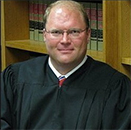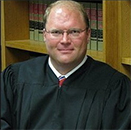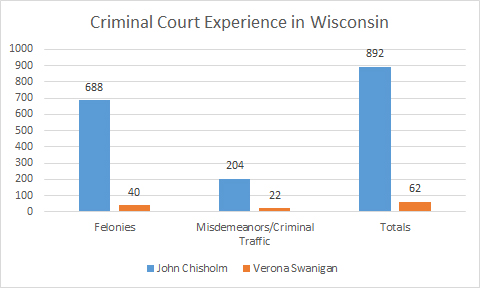|
The Wisconsin Bankers Association -- a campaign contributor to two State Supreme Court justices in their most recent races – is asking the court to rule in its member’s favor in a case the court has not even accepted yet. The association wants the court to find that a man who signed away his right to take disputes with the bank to a jury – ever – must stick to the agreement even though the bank representative would not let the man consult a lawyer before signing the document, did not give him time to review the document, and threatened to pull a loan if he did not sign, threatening the viability of a real estate project and the $30,000 the man already had sunk into it. Then, after the man sued, the bank waited three years after the start of litigation to invoke the jury waiver and insist on a court trial. Speaking of sunk money – the Wisconsin Bankers Association (WBA) gave Supreme Court Chief Justice Patience D. Roggensack a $1,000 campaign contribution in 2013. Justice Michael G. Gableman got a $250 campaign contribution from the association 2008. WBA filed a “friend of the court” brief urging the court to reject a lower court’s decision finding that the waiver was obtained through fraud and extortion. The appeals court overturned Milwaukee County Circuit Judge Jeffrey A. Conen’s finding that the waiver was A-OK. “The WBA believes that the jury waiver at issue here is valid and enforceable under the circumstances of this loan,” the association said in its brief, filed in support of a petition asking the Supreme Court to hear the case. It is unusual for friend of the court brief to be filed with the Supreme Court this early in a case, according to lawyers asked about the matter. State Financial Bank was acquired by Associated Banc-Corp. in 2006. The man, Taft Parsons, whose day job was running his own single-person structural engineering firm, signed a loan document waiving his right to a jury trial in any dispute involving the bank, ever, whether or not the dispute was related to the loan involved. Parsons signed the document after loan officer Aaron Moeser said the bank would withdraw a $774,000 loan offer if Parsons refused to sign. Taft and his wife, Carol Parsons, sought the loan to support conversion of some rundown properties in their neighborhood into townhouses. They discussed their plans with a contractor, Central City Construction (CCC), and asked its vice president, Joseph Bowles, whether CCC would be the general contractor in the project, according to the Court of Appeals decision in the case. Eventually, the Parsons signed agreements for two loans offered through Moeser. The first was a $40,000 home equity loan; the second was a $774,000 construction loan. They already had a $30,000 loan from the bank for pre-construction costs. For months, CCC did not perform agreed-upon work. After about seven months, Bowles and Moeser gave the Parsons a packet of documents to sign, the Court of Appeals said. According to the Parsons’ lawsuit, the Appeals Court said, “the Parsons were not allowed any time to review the documents or consult with an attorney before signing, and...Moeser threatened to withdraw the construction loan if Taft did not promptly sign the documents.”
(Moeser later was convicted in federal court of a felony in an unrelated bank case.) The packet contained almost 30 pages of documents, including a promissory note that had a jury waiver printed at the bottom of the last page, in all capital letters. The waiver called for Parsons and the bank to give up the right to have a jury resolve disputes rooted in “any relationship between the borrower and the lender.” Taft Parsons signed the document. If he had not, according to court documents, he would have lost the $30,000 he already had borrowed from the bank and put into the project. CCC continued to collect money directly from the bank, over Taft Parsons’ objections, despite no work getting done on the project. Eventually, the project went belly up. State Financial Bank foreclosed on the Parsons’ home, which secured the bank loans, and the foreclosure action continued after Associated acquired State. Taft Parsons filed for bankruptcy, but managed to save his home. The Parsons sued in 2011, alleging, among other things, that bank negligently hired, supervised, and trained Moeser. The Parsons demanded a jury trial and paid the jury fee. Litigation went on for three years, with the bank fully participating. Then, six months before the case was to go to trial, Associated argued the Parsons did not have a right to a jury trial. Writing for the three-judge appeals panel, Appeals Judge Joan F. Kessler said the bank missed its statutory deadline to seek a court trial and that Conen “ignored the fact” that Parsons mostly likely already had incurred costs preparing for a jury trial. In addition, Kessler wrote, “it is abundantly clear that the Parsons have provided facts to support their allegations that the jury waiver clause was fraudulently obtained by the bank.” The waiver was unconscionable, she said. WBA, in its friend of the court brief, disagreed. “Here, Borrower was a sophisticated , educated, experienced business owner taking on a complex project, in a state where there are plenty of lenders, and he had the right to walk away from the loan if he did not like the terms or the timing,” WBA said. The association did not address Associated’s delay in trying to enforce the waiver.
0 Comments
The Wisconsin Justice Initiative Inc. wrote to Ald. Michael J. Murphy, chairman of the Common Council's Judiciary and Legislation Committee, about the proposal by Ald. Terry Witkowski to hold a referendum on adding 150 police officers to the city payroll. The letter is below. Its reasoning is absurd, but enough to allow Milwaukee Municipal Court to deny our open records request for audio tapes of its proceedings. We're not giving up, though. Accountability matters. Read the WJI press release here.
The discussion among Supreme Court members during a recent Open Rules Conference was about tribal courts and circuit courts. Justice Rebecca G. Bradley noted that justices previously had expressed concern about the ability of poor people to access courts.
And then Justice Michael J. Gableman said, "...We expect, of course, that the unrepresented litigant will be knowledgeable of the law. It’s a fiction, but it’s a fiction we’ve decided as a society to subscribe to because otherwise our system couldn’t function.” Justice, apparently, is a nice outcome, but totally optional. Miranda still counts sometimes! An appeals court panel on Tuesday threw out the sexual assault adjudication of an intellectually challenged teenage boy because the armed detective who questioned him alone in a closed conference room did not read the youth his Miranda rights or tell him he had the right to have an adult present. At the time of his questioning, the boy, referred to as James in the decision by District 3 Appeals Judge Mark A. Seidl, resided by court order at Tomorrow's Children, a residential facility for children with special needs. James was not allowed to leave the grounds of the complex. When he was questioned in 2013, James was 16, but his math and English skills were at a fourth- or fifth-grade level, Seidl wrote. James' IQ previously was measured at 68. "The totality of the circumstances suggested James was not free to terminate the law enforcement encounter, and (Waupaca County Sheriff's Detective John) Mocadlo—the adult authority figure who was directing the encounter—did nothing to dispel that notion," Seidl wrote in remanding the case. "To conclude a teenager in James’s circumstances would have felt free to get up and walk away would ignore the reality of the situation." Mocadlo questioned James at Tomorrow's Children about the sexual assault of another resident at 40 days earlier. (Yes, one may question why it took the Sheriff's Department 40 days to investigate a crime.) The detective was in plain clothes, but was wearing a badge and carrying a gun, both of them visible. Mocadlo did not tell James that he did not have to participate in the interview or that he had the right to have his parents or another adult present.
Mocadlo took James to a basement conference room "and closed the door behind them," Seidl wrote. "Mocadlo never told James that he had the right to get up and walk out the door or that he was free to leave. However, James was not physically restrained or handcuffed." The detective did not give Miranda warnings, but told James that if he did not want to answer a question, to say so and they would "move on." Eventually, Mocadlo told James he was there to investigate an incident that had occurred between James and another boy and James described his sexual contact with the resident. The staff already had talked to him about it, James said. James asked St. Croix County Circuit Judge Edward Vlack III to suppress the statement, but Vlack declined. "A reasonable person in James’s position would not have felt free to terminate the interrogation and leave the scene," Seidl wrote. "The overall context of James’s experience was that he was already involuntarily present at the facility, placed there by court order....While we do not equate James’s placement to jail, from the perspective of someone in James’s position, he was restricted to the facility grounds by governmental authority and was under constant supervision. Presumably, there would be negative consequences for failure to follow staff instructions." The State Supreme Court has blessed intentional police misconduct so bad a circuit judge said it made him sick and the Court of Appeals said it deserved a strong reprimand. The Court said it simply did not matter if police acted in bad faith during their improper questioning murder suspect. The police misconduct included detaining the suspect for hours without giving the Miranda warning, ignoring several statements that she did not want to discuss the matter any more, and failing to get medical care when she fell ill. Outagamie Circuit Judge Mark J. McGinnis said he "became sick to my stomach literally . . . . [T]his is textbook interrogation of what not to do if you want to be doing good police work and get stuff admitted in during a hearing." McGinnis suppressed the woman's statements and physical evidence obtained after police got a search warrant based partly those statements. An District 3 Court of Appeals panel called the police conduct "reprehensible," but said the physical evidence should be allowed in. The Supreme Court agreed, refusing to throw out the physical evidence as “fruit of the poisonous tree,” which is evidence that is tainted because it was obtained through a tainted process. "This is a textbook interrogation of what not to do if you want to be doing good police work...." Outagamie Circuit Judge Mark J. McGinnis. The 5-2 opinion penned by Justice David T. Prosser acknowledges the degree of misconduct. “It gives us pause to consider the possibility that officers could intentionally violate constitutional rights as a’"shortcut’ to obtaining evidence….” he wrote. “We are particularly mindful of this possibility as we decide a case in which the circuit court and court of appeals, respectively, rebuked officers for "flagrant" and "reprehensible" violations of...rights——rebukes, we believe, that were warranted and appropriate.” Still, the Court said, pretending the tainted information in the search warrant did not actually exist still left enough information in the application for the warrant to be issued -- thus making discovery of the physical evidence inevitable. Prosser was joined in his opinion by Justice Rebecca G. Bradley, Michael J. Gableman, Patience D. Roggensack, and Annette K. Ziegler. Justices Shirley S. Abrahamson and Ann Walsh Bradley dissented. “A court is clearly saddened and disappointed to observe and write about intentional police misconduct violating a constitutional right” Abrahamson wrote for the two. “A court's expression of commitment to the Constitution rings hollow, however, if the court allows Miranda's shield against compelled self-incrimination to be cast aside without providing a remedy.” The case stemmed from the 2012 stabbing death of Derrick Whitlow at a hotel in the Town of Grand Chute, near Appleton. Police suspected Whitlow’s wife, Mastella Jackson. Officers went to Jackson’s home and asked her to accompany them to the police station. They also took with them her 11-year-old son. They interviewed him alone for 60 to 90 minutes, gave him a dinner break, then interviewed him again, starting between 8 p.m. and 9 p.m. During the second interview, police informed the young boy of his father’s death and continued to ask him questions. “Over and over, the officers asked the boy to tell them the truth and to "do the right thing" to help his father,” Prosser wrote. Eventually, the boy told them Jackson left the house for 10 to 20 minutes and took a shower immediately after returning home. Meanwhile, Jackson was left in a room for almost two hours before police spoke to her. They told her specifically she was not under arrest. During questioning, she asked to leave and whether they could continue at another time. When she fell ill, she asked again to go home. About six hours later into their interrogation, the police got around to reading her the Miranda warning. She already had given increasingly incriminating statements, Prosser wrote. Police obtained their search warrant based on an affidavit including information from officers responding to the hotel, from the boy’s long questioning by officers and from Jackson's interrogation, Prosser wrote. About 2:15 a.m., police brought Jackson to her house and Jackson showed them a garbage can in the garage containing the knife and the clothing she wore at the hotel. “A court's expression of commitment to the Constitution rings hollow, however, if the court allows Miranda's shield against compelled self-incrimination to be cast aside without providing a remedy.” -- Supreme Court Justice Shirley S. Abrahamson In his suppression ruling, McGinnis, the circuit court judge, said “I've never seen a case, been part of a case, or heard of a case that's worse than this in terms of what the police officers did in that interrogation room.... [T]his is just a clear violation of somebody's rights over a long period of time involving many different officers with lots of opportunities to have one of them step up and say, hey, this is not the way we need to do this."
He said the violations were "done intentionally, they were done flagrantly, they were done recklessly; and they were done without any concerns involving Ms. Jackson's rights, her constitutional rights, her statutory rights." But Prosser said excluding the physical evidence would be inappropriate because police would find the items even with trampling civil rights. "Insisting on suppression of evidence obtained by intentional misconduct would redirect the exclusionary rule to a punitive purpose——punishing the State and the public for misconduct by some officers despite independent proof of inevitable discovery of the relevant evidence," he wrote. The chart shows the number of criminal cases that District Attorney John Chisholm and challenger Verona Swanigan participated in as lawyers in Wisconsin, according to the Wisconsin Circuit Court Access Program. The numbers were obtained from the Wisconsin Circuit Court Access Program. Chisholm, a long-time prosecutor, has been involved in 892 criminal cases, according to CCAP. Some 688 of those were felonies and 204 were misdemeanors or criminal traffic cases. Swanigan, a private attorney, has been involved in 62 criminal cases, including 40 felonies and 22 misdemeanor or criminal traffic cases.
It's likely that Chisholm's case totals are undercounted because CCAP was not implemented until 1998, four years into his career as a prosecutor. Swanigan has worked more in the civil law field, particularly in small claims court. She participated in 329 small claims cases since 2012, according to CCAP. Chisholm became a Milwaukee County assistant district attorney in 1994 and was elected district attorney in 2006. Swanigan has a private law office, Swanigan Legal Services. Wisconsin Justice Initiative Inc. does not endorse candidates. Wisconsin’s state-level judiciary is the sixth whitest in the country, according to a new study. And among states with at least 100 judges, Wisconsin is dead last in racial diversity among state judges. Not so coincidentally, according to another new study, Wisconsin's black incarceration rates are more than 11 times that for whites, the second-highest disparity rate in the nation. The report on judges, "The Gavel Gap: Who Sits in Judgment on State Courts?" reports that only 5% of the 264 Wisconsin judges considered are non-white. Nationally, 20% of judges are people of color, four times the Wisconsin rate. Wisconsin's judicial diversity lags behind other Midwestern states including Minnesota (299 judges, 15% judges of color), Michigan (257 judges, 15% judges of color), Ohio (416, 9%), Illinois (436, 27%), Indiana (129, 12%), and Iowa (127, 6%). And worse, less than one percent of Wisconsin judges are non-white women, according to the report. That is better than only the seven states – Alaska, Maine, New Hampshire, North Dakota, Rhode Island, Vermont, and West Virginia – that have no women judges of color. Women as a whole are underrepresented in the Wisconsin state judiciary, according to the report. Some 50% of the state’s population is women, but just 20% of judges are. Nationally, women of color make up 8% of state-level judges and women account for 30% of state judges. Men of color account for 4% of Wisconsin judges and 12% nationally. Gov. Scott Walker recently released the names of the three finalists for the State Supreme Court seat held by David Prosser, who is retiring – all three are white males. If Wisconsin refuses to elect or appoint minority judges to the bench, it has no problems sending minorities to prison, according to "The Color of Justice: Racial and Ethnic Disparity in State Prisons." Nationally, African-Americans are sent to state prisons at a rate 5.1 times that whites are. In Wisconsin, blacks are imprisoned at 11.5 times the rate that whites are. Hispanics are incarcerated in Wisconsin at 2.6 times the rate whites are, the fourth highest discrepancy level in the country. Nationally, on averages, Hispanics are locked up in state prisons at a rate 1.4 times that whites are incarcerated.
The authors of the judicial study, Tracey E. George, a law and political science at professor at Vanderbilt University, and Albert H. Yoon, a law and economics professor at the University of Toronto Faculty of Law, said their findings "demonstrate that we need a better process for developing a pipeline of women and minorities to serve as judges. Our courts must be representative in order to fulfill their purposes. Our laws are premised in part on the idea that our courts will be staffed by judges who can understand the circumstances of the communities which they serve." And Ashley Nellis, a senior research at The Sentencing Project and author of the racial disparity report, recommended, among other things, "adequate and regular training on the role of implicit, unchecked bias by key decisionmakers in the criminal justice system." "While open expression of negative views about people of color, as well as overt discrimination, has declined significantly in many areas of American society (largely attributable to successful civil rights laws and campaigns), some convincingly argue that this overt discrimination, especially against African Americans, has transformed into implicit bias, but with similar disparate results," she wrote. "Implicit bias trainings can make people aware of these temptations, and this awareness can minimize racially influenced trigger responses in the future," she said. |
Donate
Help WJI advocate for justice in Wisconsin
|
Copyright © 2024 Wisconsin Justice Initiative Inc.
The Wisconsin Justice Initiative Inc. does not endorse candidates for political office. The Wisconsin Justice Initiative Inc. is a 501(c)3 organization.
The Wisconsin Justice Initiative Inc. does not endorse candidates for political office. The Wisconsin Justice Initiative Inc. is a 501(c)3 organization.









 RSS Feed
RSS Feed